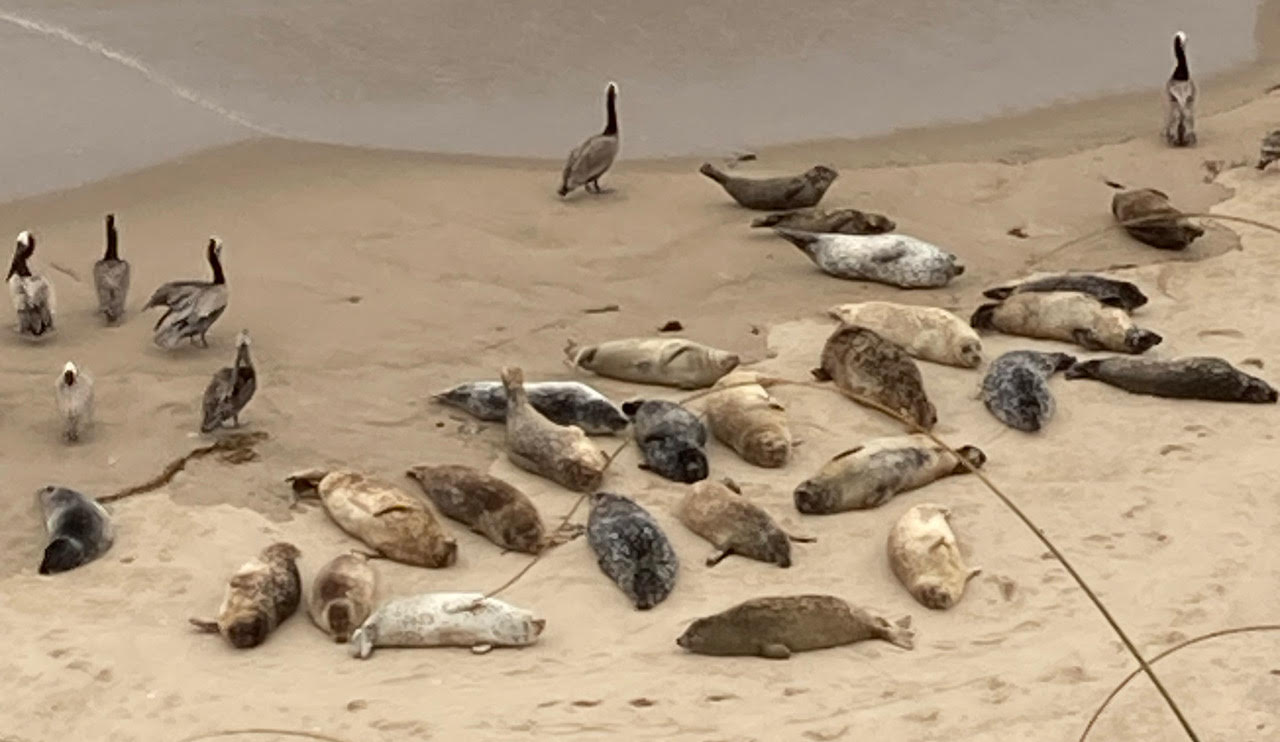Comment on SpaceX Launches from Vandenberg
100 Launches, 11 Million Pounds of Satellites, Sonic Booms, Marine Birds and Mammals — What Could Go Wrong?

Last month the California Coastal Commission heard public comments regarding the Department of Air Force application for increased launches at Vandenberg Space Force Base (VSFB).
The Coastal Commission acknowledged SpaceX as a private enterprise, not a federal agency, and must accept reasonable conditions to safeguard coastal resources. The Air Force, which is the official applicant, refused conditions that would protect sensitive environments on and around Vandenberg from impacts of engine noise, sonic booms, and excessive lighting.
The majority of launches will be for SpaceX, which declined all three Coastal Commission invitations to attend. SpaceX wants 50 launches annually by October 2024 and will request 100 launches annually in 2025. As of July 2024, there were 6,281 Starlink satellites in orbit. A Starlink satellite has a lifespan of approximately five years, and SpaceX eventually hopes to have as many as 42,000 satellites, according to Astronomer Jonathan McDowell, who tracks this so-called megaconstellation.
The current Starlink satellite version two weighs approximately 1,760 pounds (800 kilograms) at launch, almost three times heavier than the older generation satellites (weighing in at 573 lbs or 260 kg), according to Spaceflight Now. They have a lifespan of about five years. Doing the math, the existing satellites weigh a total of 11,054,560 pounds, or 5,024,800 kilograms.
Numerous cases of inadequate and faulty monitoring by the Air Force are indicated in the Coastal Commission staff report. The Air Force’s proposed mitigation is ludicrously inapplicable regarding harms to endangered species.
Direct contingency plans must be developed to avoid or lessen any impacts that are identified.
For example, the Air Force proposed to report after two years any impacts observed on dune nesting birds, Western snowy plover and endangered California least tern. If there is a noted impact, the Air Force proposes to increase predator control measures by killing crows and ravens. This obviously fails to address a consideration of reduced launches.
SpaceX, on whose behalf the Air Force applied, is not a partner to be trusted. The Center for Biological Diversity press release about saving a Texas wildlife habitat, stated that the FAA and U.S. Fish & Wildlife had failed to “fully analyze the dangers of a rocket test launch and mitigate environmental harms from the April 20 (2023) … explosion of the SpaceX Starship/Super Heavy rocket and launchpad at Boca Chica.”
This launch ejected “concrete and metal thousands of feet into the surrounding lands. This included sensitive tidal flats and other habitat for migratory birds and federally protected species covering an approximate 385-acre area, nearly 3 acres of which were sensitive dune vegetation that was severely burned. A plume of dust also blanketed a residential area more than six miles from the launchpad.”
The press release goes on to say that Fish & Wildlife “further failed to address excessive noise and vibrations from the first launch, including reports that noise levels greatly exceeded what was expected.”
And there’s more. A National Park Service official said his office was misled over SpaceX’s launch expansion. “They kept saying, ‘No, we are not going to do that, we are not going to do that,’ and then they came back and said, ‘Yes, we are.’ We were being misled,” Mark Spier told the New York Times.
From the Coastal Commission staff report: “[S]onic booms generated by proposed SpaceX rocket launches subject an extensive area of central and southern California’s mainland coast and offshore islands to blast waves and elevated sound levels. Marine mammals and other coastal wildlife species outside of VSFB experience these sound and pressure effects, and respond with startle responses and other behavioral changes.”
There are no significant studies of both “spillover” and direct effects within the coastal zone, including atmospheric and underwater acoustic monitoring, or to study the effects of sonic booms and avoiding noise impacts.
Missile trajectory goes over the Santa Barbara Channel and the Channel Islands National Marine Sanctuary, an extremely rich and diverse community of marine animals. Many species either breed on the islands or feed in these productive waters, including endangered blue whales.
Whales and dolphins depend primarily on their acoustic capabilities for foraging, breeding, and predator avoidance. “A deaf whale is a dead whale.”
Of the 26 speakers at the Coastal Commission’s most recent meeting, three of the four in favor were local politicians. Twenty-two people expressed concern, 10 of whom represented organizations.
I agree with the majority of public comments at the Coastal Commission hearing. Increased launch activity cannot come at the expense of the environment. I call for slowing down the pace of launch increases until their impacts can be studied and understood.
The Channel Islands National Marine Sanctuary’s Advisory Council is meeting on September 20, at the Santa Barbara Zoo, at 9 a.m., at which public comment will be accepted, although this topic is not on the agenda.
The Coastal Commission will discuss the Air Force application for 50 launches annually at its October 10 meeting. The item is the Federal Consistency Determination No. CD-0007-24 (U.S. Space Force). For action and information, including the public comment option, visit a Google doc I am updating here: https://bit.ly/3zb53bw.
The Marine Sanctuary’s Advisory Council will meet next on Friday, November 15 (Port of Hueneme with online option). Although this topic is not yet on the agenda, public comment will be accepted.
